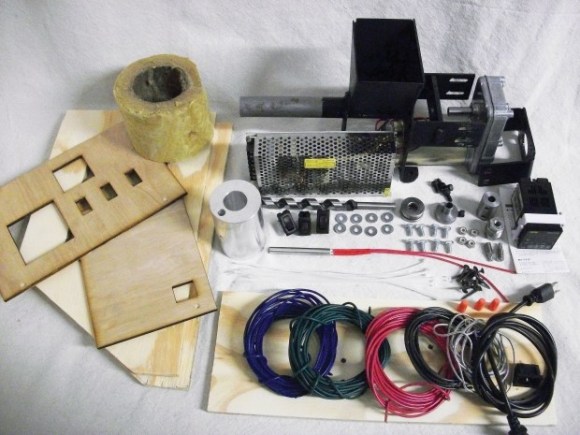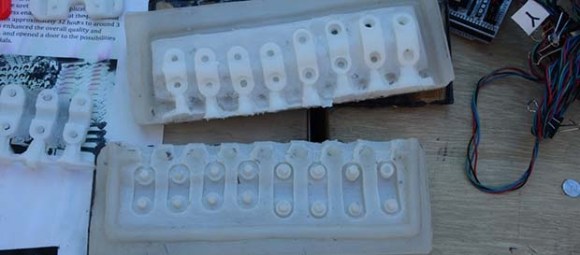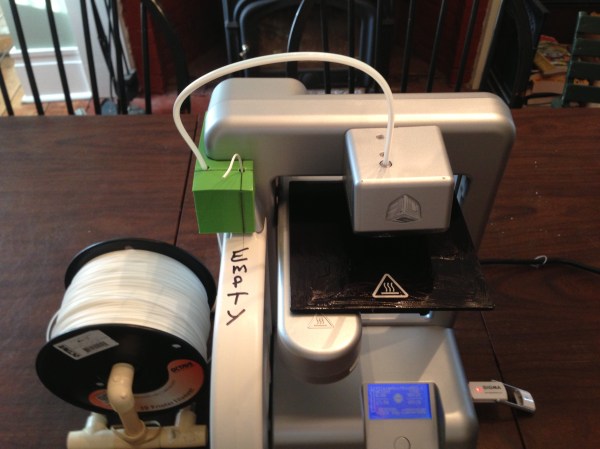
Now there’s yet another option for making your own 3D printer filament: the Filabot Wee. It looks like their once open source model that they pulled from Thinigiverse earlier this year has received a significant makeover, though we aren’t sure what parts may have changed. (EDIT: Filabot says the Wee is still open source, and that once they’ve updated the files they will be available again.)
As you would expect, the Wee has a PID temperature controller and is capable of extruding both ABS and PLA pellets into either 1.75mm or 3mm-diameter filament. Speed varies depending on materials and thickness, but can reach 5 to 20 inches per minute of filament extrusion. Though the Filabot gang is selling the extruder as a kit, you can probably save a few bucks if you have access to a laser cutter and some other basic materials.
You should expect to spend more for Filabot parts ($649) than you would for the original Lyman extruder, though perhaps a more fair comparison would be the new third version of the Lyman extruder, whose bill of materials approaches $900. Considering Lyman’s recent comments that indicate an extrusion rate of 40-50 inches per minute, the extra bucks may be worth it. You can check out a demonstration video of the Filabot Wee after the break.

















